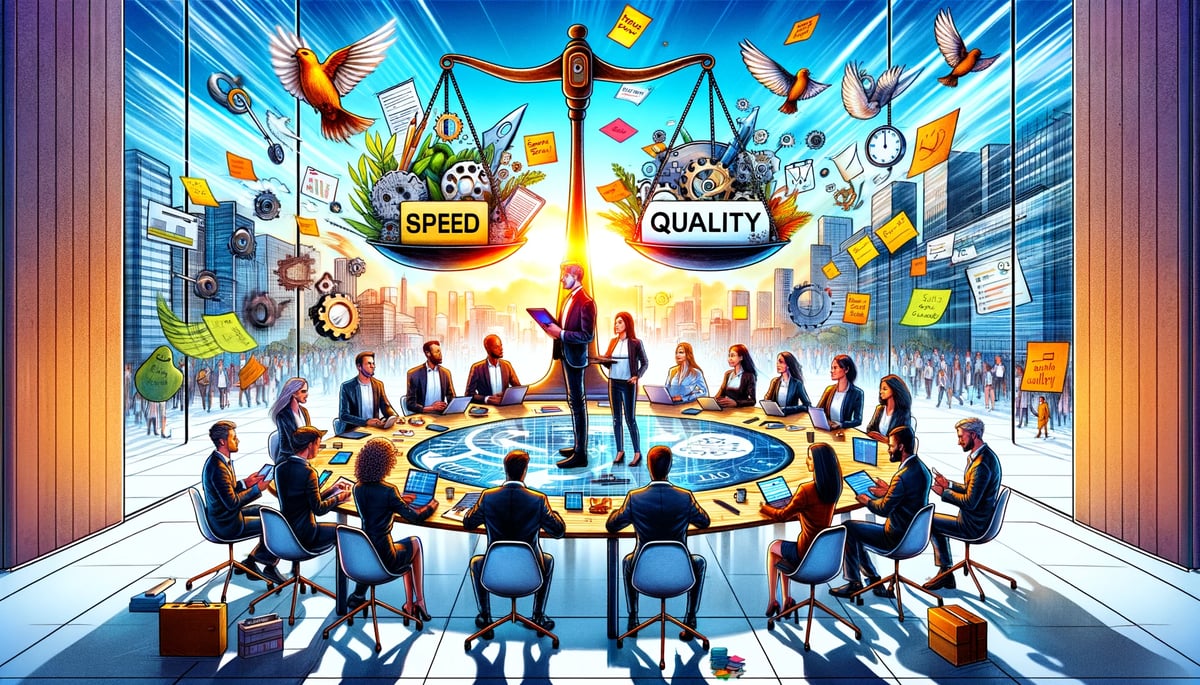
Agile Unplugged: Work Controversies & Future Insights

Agile delivery has been shaking things up in the workplace for a while now, and it’s not without its share of drama.
From tech startups to big corporates, everyone’s got something to say about it. Let’s dive into the buzz around agile, peel back the layers of controversy, and speculate a bit on what it means for the future of work.
The Great Divide
At its core, agile is like the rebel of project management methods, breaking away from the old school’s love for meticulous planning and fixed goals. It’s all about being quick on your feet, making adjustments on the fly, and embracing change. Some people argue that this makes things chaotic, lacking the predictability big organizations love. But then, agile advocates argue back, saying that being able to pivot fast is critical in today’s market.
Work Culture Shake-Up
Switching to agile is a bit like deciding to remodel your house while you’re still living in it. It promises a cooler, more open space, but the transition can be messy. Agile pushes for teams to work closely, share openly, and take charge—which sounds great, right? But the flip side is the relentless pace and the pressure to deliver “yesterday,” which can crank up the stress levels and lead to burnout. Not everyone’s cut out for or interested in this kind of hustle.
The Speed-Quality Tug-of-War
A big talking point is whether agile makes you sacrifice the quality of your work to hit accelerate delivery. It’s a reasonable concern—rushing can lead to errors. However, agilists will tell you that by weaving in constant testing and feedback, you’re actually catching defects in the work earlier and polishing the end product as you go. It’s a bit like editing your essay paragraph by paragraph instead of doing one big proofread at the end.
Growing Pains
Agile works like a charm in small teams, but try applying those same principles to a mega organization, and you might hit a wall. There are frameworks designed to scale agile (like SAFe or LeSS), but they often end up being so complex that you lose the simplicity and flexibility that made agile appealing in the first place. Critics say it’s like trying to have your cake and eat it too, ending up with something that’s neither here nor there.
Peeking into the Future
So, what’s next for agile and the world of work? Well, agile thinking is creeping beyond software into all sorts of industries, reshaping how we approach projects and teamwork. The big question is how to keep the agile spirit alive—staying nimble and innovative without burning out or losing sight of quality.
The future likely holds a more nuanced take on agile, blending its best bits with the stability and clarity that traditional methods offer. Finding that sweet spot where flexibility meets discipline could be the key to making agile work for everyone.
In a nutshell, agile’s stirred up a lot of feelings and debates, but it’s also sparked innovation and a rethink of how we work. As the workplace continues to evolve, agile principles, with a little tweaking, could lead the charge in shaping a more responsive, dynamic, and ultimately, human-centric world of work. So, let’s keep the conversation going and see where this agile journey takes us. For more on what Source Agility is doing to balance culture with delivery performance go here.

Niall McShane
Niall McShane is the founder and Managing Director of Source Agility, specialising in optimising IT delivery through practical, proven approaches. He's also the internationally published author of 'Responsive Agile Coaching', bringing over 12 years of delivery transformation experience to complex IT environments. Drawing from his unique background spanning sports coaching to Buddhist principles, Niall's counter-intuitive approach helps organisations slow down strategically to accelerate sustainably. His focus on combining immediate delivery improvements with lasting internal capability has helped numerous Australian organisations achieve dramatic improvements in delivery speed and predictability. When not helping teams unlock their delivery potential, Niall can be found on the golf course, where he admits his professional expertise in performance improvement has yet to benefit his stubbornly unchanging handicap!

